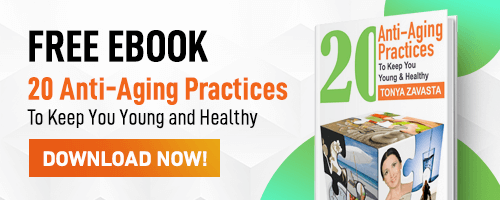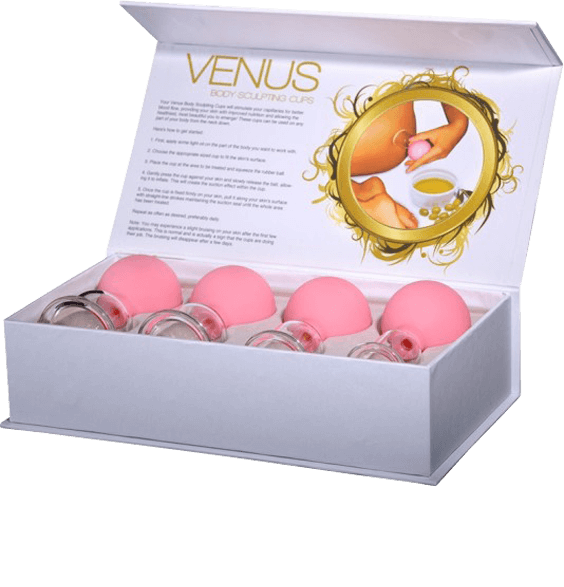Cupping Therapy Cups

What is Cupping Therapy?
The alternative medical practice of cupping therapy has seen a surge of interest lately, thanks to its use by celebrities and athletes. The Rio Olympics brings us the most recent example, used by swimmer Michael Phelps and teammates for the treatment of aching muscles. Phelps “swears by it,” says the Huffington Post's article.
The Huff and TV media point to the circular bruise-like marks left by the stationary heated cups as they bring better blood flow to the surface.
If you know only a little bit about “cupping therapy,” you may suppose, as many do, that it’s some sort of latest trend in holistic health.
On the contrary… Cupping therapy is an ancient alternative form of medicine, long popular in China and Russia. You’ll find it mentioned in the Ebers Papyrus, one of the oldest medical texts in existence. Cupping was used by the ancient Egyptians, by Hippocrates, and was known across Asia and Europe.
People in many cultures have used this method to not only deal with various internal ailments, but even for correcting structural misalignment. And recently cupping has become increasingly popular as cellulite, stretch marks and overall skin rejuvenation solution.
Methods for achieving reduced pressure inside the cup vary. Local suction is achieved by using heat (fire), a mechanical pump, or hand-pumping.
Fire cupping
Here’s what’s commonly done in Russia and China for treating respiratory problems—colds, pneumonia or bronchitis…
A glass cup is used and an alcohol-soaked wick is lit and placed inside the cup. The air inside is heated and expands, so that when the wick is removed and the cup quickly placed against the skin, the air in the cup cools, forming a partial vacuum inside, so it sticks to the skin, creating a strong suction. As a result of the vacuum inside, blood rushes to the area, helping healing. The suction created by the cup penetrates deep into the tissues, releasing toxins, triggering the lymphatic system, and clearing the blood vessels. The glass cup is left stationary on the back for 10 to 20 minutes. Where the blood or lymph is stagnant, circular bruising impressions will be left. These fade in about 4-7 days.
You may not yet be familiar with a variation of cupping wherein you don’t keep the cups still but move them along the skin. You can use this “cupping massage” for skin rejuvenation anywhere on, for example, scars, stretch marks, or wherever cellulite appears on the body. This type of cupping therapy can also improve circulation, skin tone, and elasticity. And it doesn’t leave on your skin those characteristic circular marks.
No-Fire Cups
More and more people in the West becoming aware that cupping therapy is not only beneficial on the deep therapeutic level, but also produces a rejuvenating effect on the skin and underlying tissues at the place of application. But not many are comfortable with using the fire cups as they usually require assistance and can be messy.
As a result, in recent years a new cupping method has rocketed in popularity. This is cupping massage with “no-fire cups.” Oil is applied to lubricate the area of the skin to be treated. Then a partial vacuum is created in the cup by means of a mechanical pump or, more commonly, by simply squeezing a rubber ball attached to the cup. The cup is then pressed on the skin and the rubber ball is released.
In this method, the cup is constantly moved over the skin surface in a massaging motion instead of being left in place as with the fire cups. Some temporary bruising is also to be expected with these cups during the first week of use, especially if your body has blood circulation issues and if you're leading a sedentary lifestyle.
Benefits of Cupping Massage
Cupping is great for general skin rejuvenation. And it’s ideal for scars, stretch marks and cellulite. One great benefit of this massaging method: Bruising is usually minimal.
Cupping massage will improve the peripheral circulation of your blood, lymph and interstitial fluid. Stagnant blood in aging capillaries will gradually disappear, and you’ll improve the metabolism and respiration of the skin in massaged areas. Repeated cupping massage will improve skin tone and elasticity. Many users also report fewer muscle cramps in the treated areas.
To experience the benefits of cupping massage consider our Venus Body Sculpting Cups. They are convenient to use, for they have a simple pump to create the needed air pressure, allowing you to regulate how much suction you wish to apply. Regular practice will keep your skin nutrient-rich and well-hydrated, oxygenated and free of trapped toxins, all of which will show glowingly, through smooth, moist skin, blessedly free of cellulite!
How Does Cupping Therapy Work?
When you use the suction cup, creating a partial vacuum, a little blood squeezes out through capillary walls underneath the skin, also creating a bruise. It comes down to this: Healthy capillaries are highly elastic and won’t break or allow blood to squeeze out. Only more aged, inelastic capillaries will lose blood. This fact makes suction cupping treatment usefully selective.
A more distant cousin of the same process: In holding a yoga pose, you create a brief “tourniquet effect,” and then, when you release the pose, your vessels are flushed with new blood and oxygen. Yoga focuses on the organs, joints and ligaments. But in cupping massage, we concentrate our efforts on rejuvenating our most visible organ—the skin.
Personally, I apply it on my legs, my upper chest area and on my arms.
The first four or five times you use the suction cups, you may find some slight bruising that will go away in a few days. At first begin with your thighs and butt, less visible areas of the body, so you can see how your skin reacts.
The Healing Potential of Bruising
Western medicine tends to react negatively to bruising. In the East, however, there are several holistic practices focusing on the healing potential of bruising. Fire-cupping and the Chinese practice of gua sha work on the same principle.
In Russia, fire cupping has long been used for treatment of various ailments. It would cause a bruise, which triggers the body’s powerful repair mechanisms. Needed hormones and antibodies would rush to the area and healing would begin. The blood is the patient’s own, and there’s no real injury inflicted—a simple technique, yet it was effective by making use of the body’s own healing mechanisms.
The Reasons Behind Bruising
If a capillary is inelastic, the blood inside tends to be stagnant. Such stagnant blood often occurs if your body is highly acidic, and may indicate that you have a large number of abnormally shaped blood cells (poikilocytes).
When this stagnant blood starts to emerge from the capillaries after a cupping treatment, it triggers the body’s regenerative mechanism. There is then a jump in the immunal response, leading to tissue rejuvenation. What’s more, renewed blood flow stimulates the metabolism in areas of excess fat, making fat tissue more pliable, better able to be released by aerobic exercise.
There’s a lot going on here, causally. That’s why no single beauty tools will help you if you don’t take care of what goes into your body. Diet is an essential ingredient. For capillary strength, build lots of Vitamins C, K and E into your diet. That can be hard on a conventional diet. But the raw food diet already includes plenty of these vitamins.
Another thing you can do to improve the health of your capillaries is follow a regular exercise routine. Any reasonable exercise will do—regularity is the ticket. Yoga practice, in particular, promotes good blood circulation, which in turn strengthens your capillaries.

